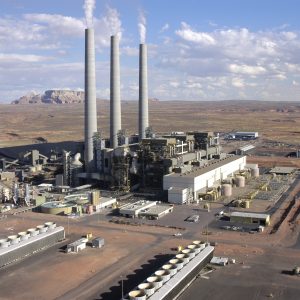The Stream, November 21, 2019: Nevada Water Supply At “Critical Mass,” Official Warns
The Global Rundown
A Nevada official declares that the state’s water supply has reached a “critical mass.” South Korea asks Japan to disclose information about the potential looming release of radioactive water from the Fukushima nuclear plant. China constructs three water plants in Sri Lanka in an attempt to foster greater relations with the island nation. A statewide analysis shows trace levels of PFAS in 15 percent of Kentucky’s water supply. Families in Honduras’ Dry Corridor learn watershed management techniques amid increasing threats to water supply.
“Between historical over-appropriation and over-pumping in our water basin and people moving to Nevada– regardless of the number of tourists we have coming in–we have had an influx of population in the north and in the south.” –Brad Crowell, director of Nevada’s Department of Conservation and Natural Resources, in reference to water stress in the state. Crowell believes Nevada’s water supply has reached a “critical mass.” A pipeline from eastern Nevada to Las Vegas has been suggested as a way to alleviate some of the state’s water shortages, but the project has drawn opposition from ranchers, tribes, and other activists. U.S. News & World Report
Latest WaterNews from Circle of Blue
What’s Up With Water – November 18, 2019 — This week’s edition of What’s Up With Water includes coverage on thousands of hazardous dams in the United States, discolored water in Cleveland, Ohio, and how water connects climate to health.
HotSpots H2O: Bushfires Raze Parts of Eastern Australia as Government Quarrels over Climate Change — Devastating wildfires are sweeping across large swathes of Australia’s drought-stricken eastern coast, heralding what is likely to be a long and unforgiving bushfire season.
By The Numbers
$11 billion Estimated amount that China has invested in Sri Lanka in an attempt to boost trade and diplomatic ties between the two nations. The various infrastructure projects that China has funded include three water facilities that supply clean drinking water to drier parts of the island. Reuters
15 percent Proportion of drinking water samples from the state of Kentucky that contained trace amounts of PFAS chemicals, based on a study by the state Department for Environmental Protection. Out of 648 samples, PFAS was detected in 96. None of the samples contained PFAS levels above the EPA’s health advisory of 70 parts per trillion. Lexington Herald Leader
Science, Studies, and Reports
Nonprofits in Honduras are working to educate families about proper watershed management in the country’s Dry Corridor. The parched region faces a variety of threats to water, including drought, pollution, and expanding infrastructure. By providing education on watershed management, as well as water conservation, aid groups hope to stabilize the limited supply in the area. Relief Web
On the Radar
The amount of radioactive water at Japan’s damaged Fukushima nuclear plant continues to increase, with estimates showing that the plant will run out of room for the water in 2022. Japan has not decided how to handle the tainted water, but says it will likely need to be released into the Pacific Ocean. South Korea, a neighboring country to Japan, is requesting details about the potential release in order to better prepare for the potential release of radioactive water into the Pacific. Reuters
Kayla Ritter is a recent graduate of Michigan State University, where she studied International Relations and Teaching English to Speakers of Other Languages. She is currently based in Manton, Michigan. Kayla enjoys running, writing, and traveling. Contact Kayla Ritter







Leave a Reply
Want to join the discussion?Feel free to contribute!